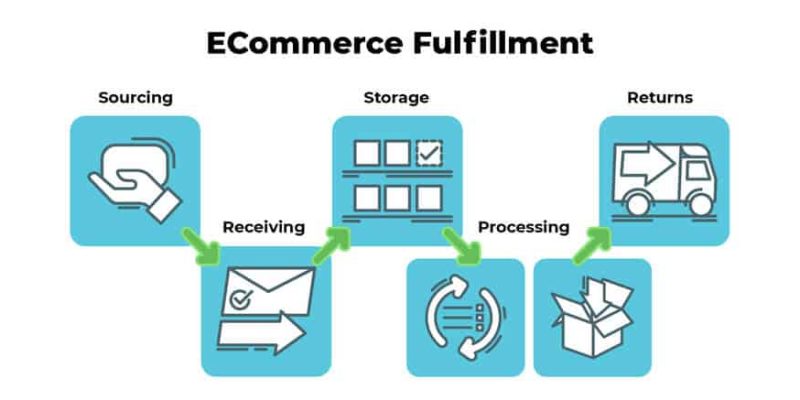Order fulfillment is a crucial part of the fast-paced e-commerce world. It ensures customer satisfaction and success for businesses. But what is order fulfillment and how does this work? This guide will explore the intricacies behind order fulfillment. We’ll look at its definition, process, and key strategies for streamlining operations and enhancing customer experiences. Additionally, we’ll delve into the role of ecommerce order fulfilment services in this dynamic landscape.
What is Order Fulfillment?
Defining Order Fulfillment
The order fulfillment process includes the entire procedure from the moment an order is received to when the product is delivered to the customer. It involves a number of steps and logistics operations that are aimed at processing and shipping orders efficiently.
Order Fulfillment Process in 7 Steps
1. Order Processing
The fulfillment center receives and processes the order once it has been placed. The fulfillment center verifies the order details and checks inventory availability before preparing it for fulfilment.
2. Inventory Management
For a seamless order fulfillment, effective inventory management is essential. Inventory management involves monitoring stock levels, replenishing stock, and ensuring accuracy in product counts to avoid stockouts or excesses.
3. Picking
It is the act of selecting items from an inventory in order to fill a customer’s request. Picking can be automated or done manually using technologies like barcode scanners and automated guided vehicles.
4. Packing
The items are then packed tightly to avoid damage in transit. Packaging materials and methods can vary depending on product nature and shipping requirements.
5. Shipping
The order is then handed to the shipping company for delivery. It is important to choose the best shipping method and carrier for a timely and cost-effective service.
6. Tracking
Customers can track their orders in real time. Tracking information increases transparency and trust among customers.
7. Returns Management
The order fulfillment process includes managing returns. This involves restocking stock, issuing refunds and exchanges in accordance with the company’s policy, as well as processing returned products.
Key strategies for effective order fulfillment
1. Invest in Automation
Automation technologies, such as warehouse management system (WMS) or order management systems(OMS), can help streamline operations and reduce error.
2. Maximize Inventory Visibility
Having visibility of inventory across multiple channels can help prevent stockouts, and ensure accurate order fulfillment.
3. Implement Efficient Packing Practices
Packing processes that are optimized, like using standardized materials and efficient layouts for packaging, can reduce packing time and shipping costs.
4. Offer Multiple Shipping Options
Customers will be more satisfied if you offer them a variety of shipping options.
5. Focus on Customer Communications
Customer satisfaction is enhanced by timely and clear communication during the entire order fulfillment process. This includes everything from confirmation of orders to updates on delivery.
6. Improve processes continuously
By regularly evaluating and optimising fulfillment processes on the basis of data analysis and feedback from customers, you can adapt to changing market dynamics.
7. Create Partnerships
Collaboration with reliable suppliers, shipping carriers and fulfillment partners can increase operational efficiency and enhance fulfillment capabilities.
Conclusion
Order fulfillment is an important aspect of ecommerce operations. It influences customer satisfaction, retention and business success. Businesses can reduce costs and streamline operations by implementing strategies that take into account the complexities of the order-fulfillment process.













Comments